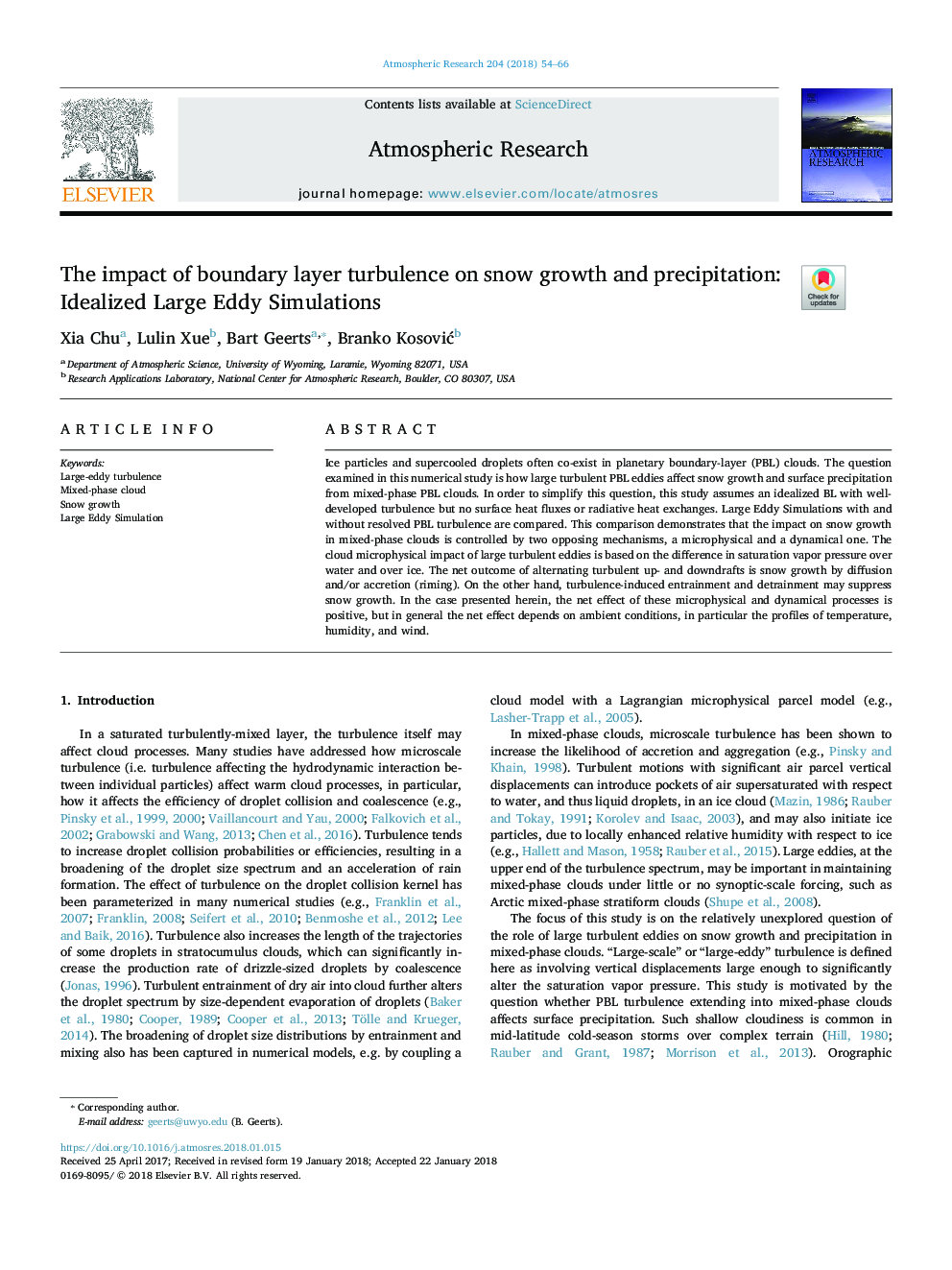| Article ID | Journal | Published Year | Pages | File Type |
|---|---|---|---|---|
| 8864721 | Atmospheric Research | 2018 | 13 Pages |
Abstract
Ice particles and supercooled droplets often co-exist in planetary boundary-layer (PBL) clouds. The question examined in this numerical study is how large turbulent PBL eddies affect snow growth and surface precipitation from mixed-phase PBL clouds. In order to simplify this question, this study assumes an idealized BL with well-developed turbulence but no surface heat fluxes or radiative heat exchanges. Large Eddy Simulations with and without resolved PBL turbulence are compared. This comparison demonstrates that the impact on snow growth in mixed-phase clouds is controlled by two opposing mechanisms, a microphysical and a dynamical one. The cloud microphysical impact of large turbulent eddies is based on the difference in saturation vapor pressure over water and over ice. The net outcome of alternating turbulent up- and downdrafts is snow growth by diffusion and/or accretion (riming). On the other hand, turbulence-induced entrainment and detrainment may suppress snow growth. In the case presented herein, the net effect of these microphysical and dynamical processes is positive, but in general the net effect depends on ambient conditions, in particular the profiles of temperature, humidity, and wind.
Related Topics
Physical Sciences and Engineering
Earth and Planetary Sciences
Atmospheric Science
Authors
Xia Chu, Lulin Xue, Bart Geerts, Branko KosoviÄ,
